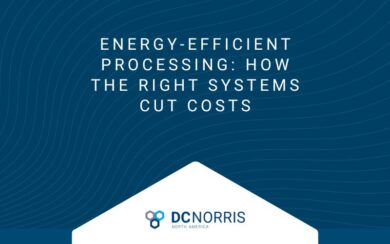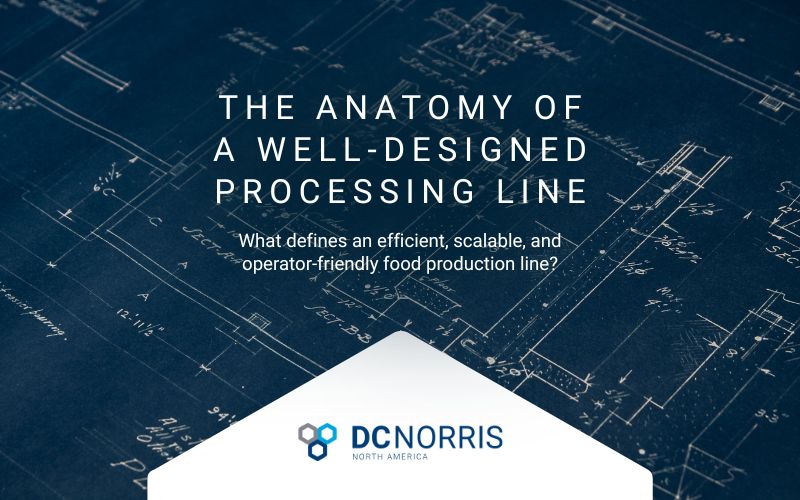 In this article: In food manufacturing, plant energy spend is one of the fastest, most controllable levers for margin. Upgrading to energy-efficient food processing equipment improves critical process steps like heat-up times, cool-down phases, and CIP cycles. It also reduces waste and improves labor efficiency. Systems and equipment like Jet Cook™, belt tumble chillers, vacuum cooling, enhanced process kettles, and the AutoCan 1000 deliver measurable operational savings while supporting sustainability goals. Our team can highlight places where your operation can save money with a process audit. Schedule one on our website.
In this article: In food manufacturing, plant energy spend is one of the fastest, most controllable levers for margin. Upgrading to energy-efficient food processing equipment improves critical process steps like heat-up times, cool-down phases, and CIP cycles. It also reduces waste and improves labor efficiency. Systems and equipment like Jet Cook™, belt tumble chillers, vacuum cooling, enhanced process kettles, and the AutoCan 1000 deliver measurable operational savings while supporting sustainability goals. Our team can highlight places where your operation can save money with a process audit. Schedule one on our website.
Energy efficiency is a margin play, not a nice-to-have
Food and beverage manufacturing is energy and emissions intensive, contributing about 6% of total U.S. industrial emissions. Efficiency gains in process heating, cooling, and cleaning translate directly to lower operating costs and higher throughput, often without new headcount. Department of Energy guidance shows that optimizing steam and process-heating systems is a proven, low-risk path to savings, with tools and practices available for immediate application.
At DC Norris North America, we pair Expertise + Equipment so you can act on those opportunities quickly. As the exclusive North American access point to four global food manufacturing brands, you get integrated options across cooking, mixing, cooling, can processing, and more backed by one accountable team.
Faster heat-up, less burn-on, better yields
Direct steam infusion integrated into systems like Jet Cook™ transfers energy rapidly and uniformly. Independent research shows steam infusion can cut energy consumption per batch by roughly 17% versus basic direct steam heating while also shortening processing hours each year. Faster thermal ramps reduce burn-on and cleanup, improve particulate integrity, and open capacity. We’ve implemented many systems across the US and Canada that have resulted in energy savings that far surpass the average.
Cooling time is money
If you produce ready meals, you know chilling often sets the pace for the entire shift. We’ve identified two widely applicable, practical systems to win back efficiency in cooling:
- Batch bags and pouches: Our Belt Tumble Chiller is designed for efficient heat removal and faster unloading, which reduces labor touches and shortens changeovers.
- Liquids with or without particulates: Vacuum Cooling removes heat by flash evaporation. Studies show large sauce batches can cool in a fraction of the time of air-blast cooling. Faster cooling supports food safety, increases daily production, and reduces refrigeration load.
Both cooling systems minimize dwell time in temperature danger zones and reduce compressor run time per pound cooled.
CIP that wastes less water, chemicals, and energy
Optimized clean-in-place eliminates overtime cycles, reduces water waste, and energy while improving hygiene. Those gains have a double benefit: less utility spend and more production hours.
Our process team routinely tunes new and existing systems to standardize CIP windows and right-size utilities. The result is predictable cleaning, fewer manual interventions, and better shift planning.
Smart material handling reduces waste and frees labor
Opened cans that still hold product are pure loss. The AutoCan 1000 combines pre-rinse, opening, emptying, washing, and crushing into one piece of equipment capable of processing up to 1,000 A10 cans per hour. By improving product recovery while consolidating steps under one operator, equipment like the AutoCan 1000 delivers less waste, better ergonomics, and cleaner cans for recycling.
What a typical ROI looks like
Every plant is different, but the payback pattern is consistent for energy-efficient food processing equipment:
- Thermal efficiency: Jet Cook enhanced process kettles reduce batch energy and shorten heat-up, which increases total daily output.
- Cooling efficiency: Belt tumble chillers and vacuum cooling compress chilling windows, reduce refrigeration load, and get product to safe storage faster.
- CIP efficiency: Standardized, data-driven CIP lowers water, chemicals, and energy use while handing back hours to production.
- Labor efficiency: Automation through equipment like the AutoCan 1000 reduces handling and rework while improving recovery.
Many U.S. and Canadian utilities offer incentives for industrial efficiency projects, which can further improve payback. Programs change regionally and over time, but facilities often qualify for support when metering, controls, or high-efficiency equipment are installed.
Why DC Norris North America
You are upgrading for performance, not optics. With DC Norris North America, you get one team that designs around your goals: energy use per pound, cycle time, labor efficiency, product quality, recipe integrity, and safety. We integrate systems and equipment like Jet Cook™ and the AutoCan 1000 to fit your products and plant layout, then we back it with process engineering and support.
Browse our case studies from leading ready-meal and soup producers.
Schedule a process audit
We will benchmark thermal, cooling, handling, and CIP on your current SKUs, model savings, and map an upgrade path that minimizes disruption. Start here: Schedule a process audit.



